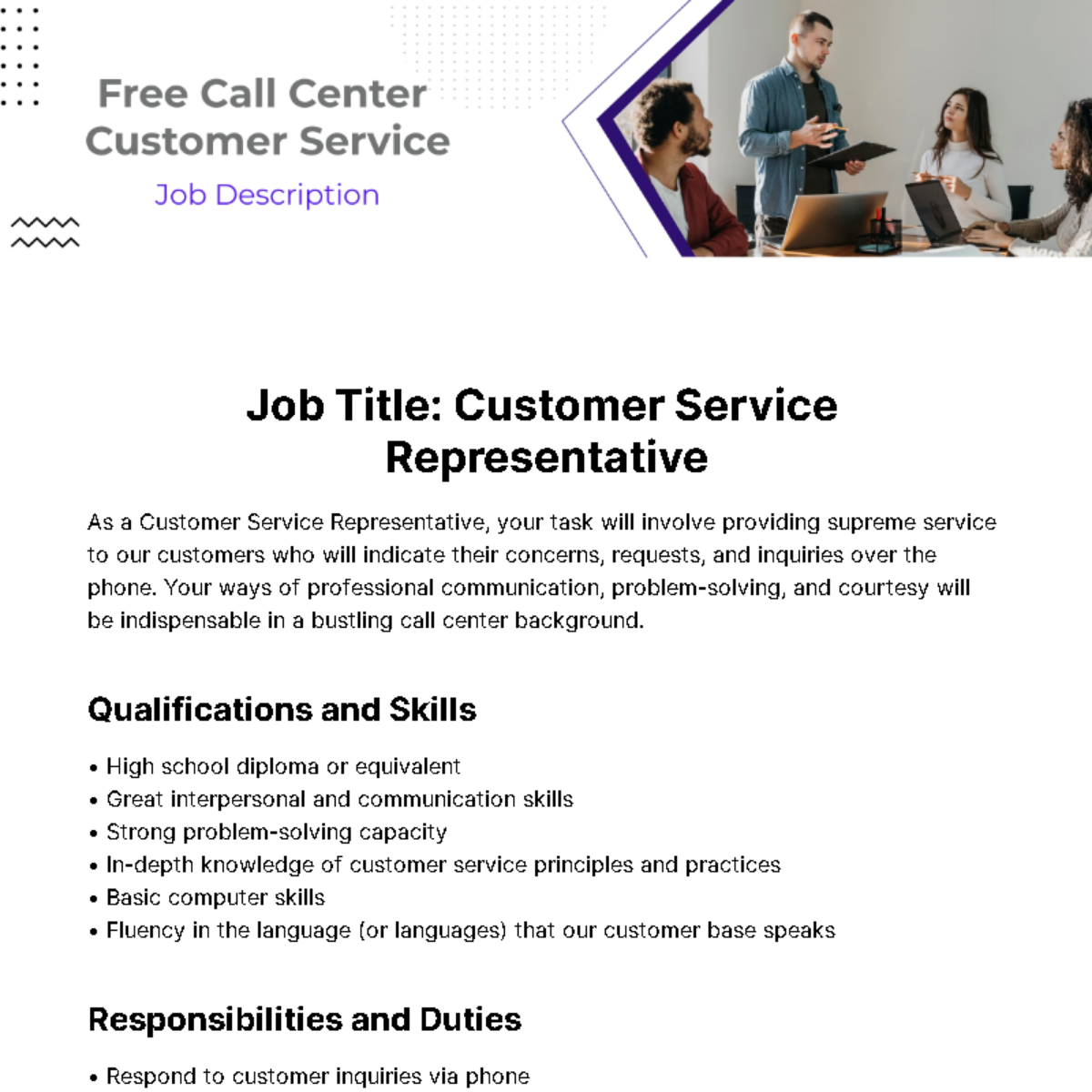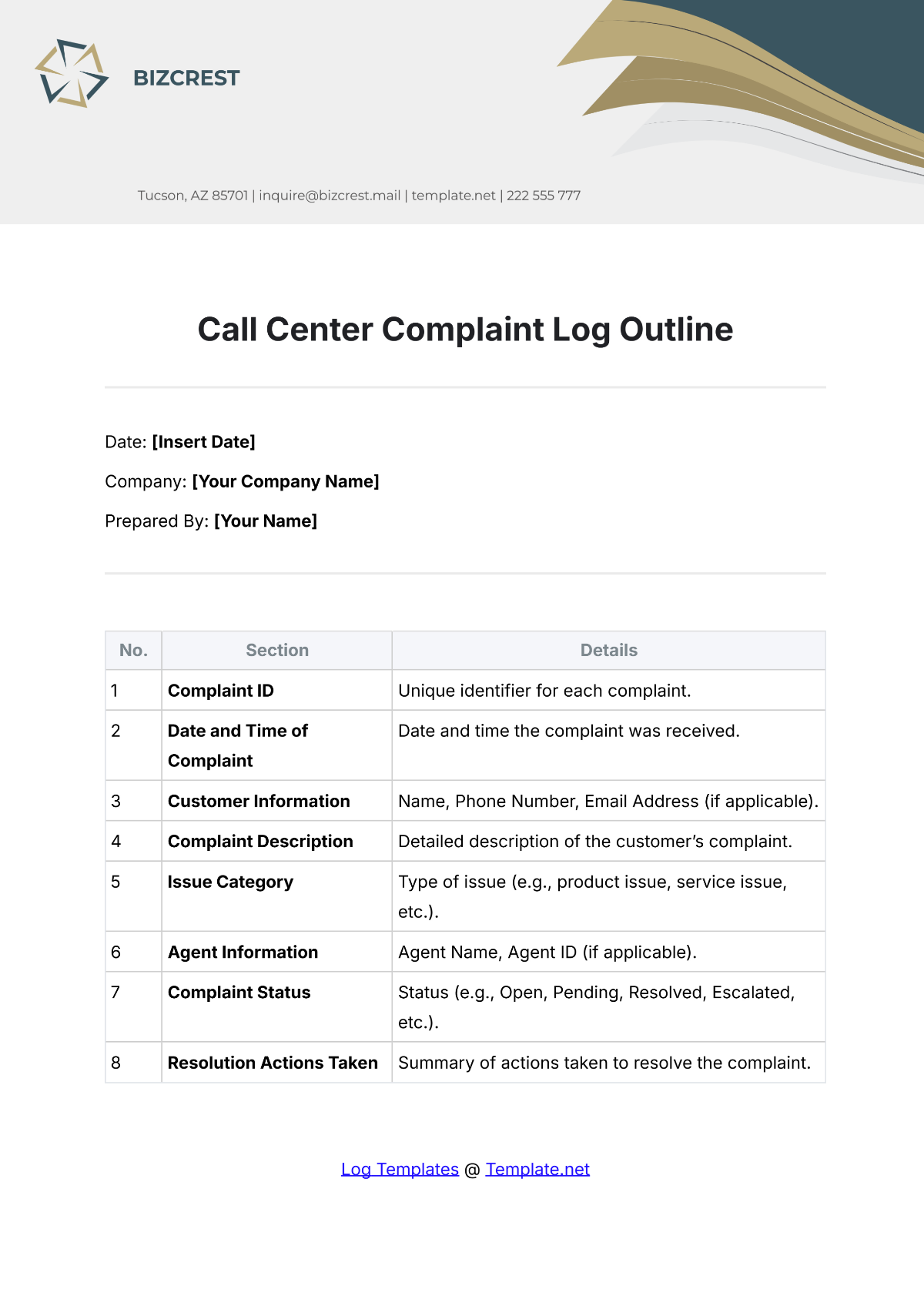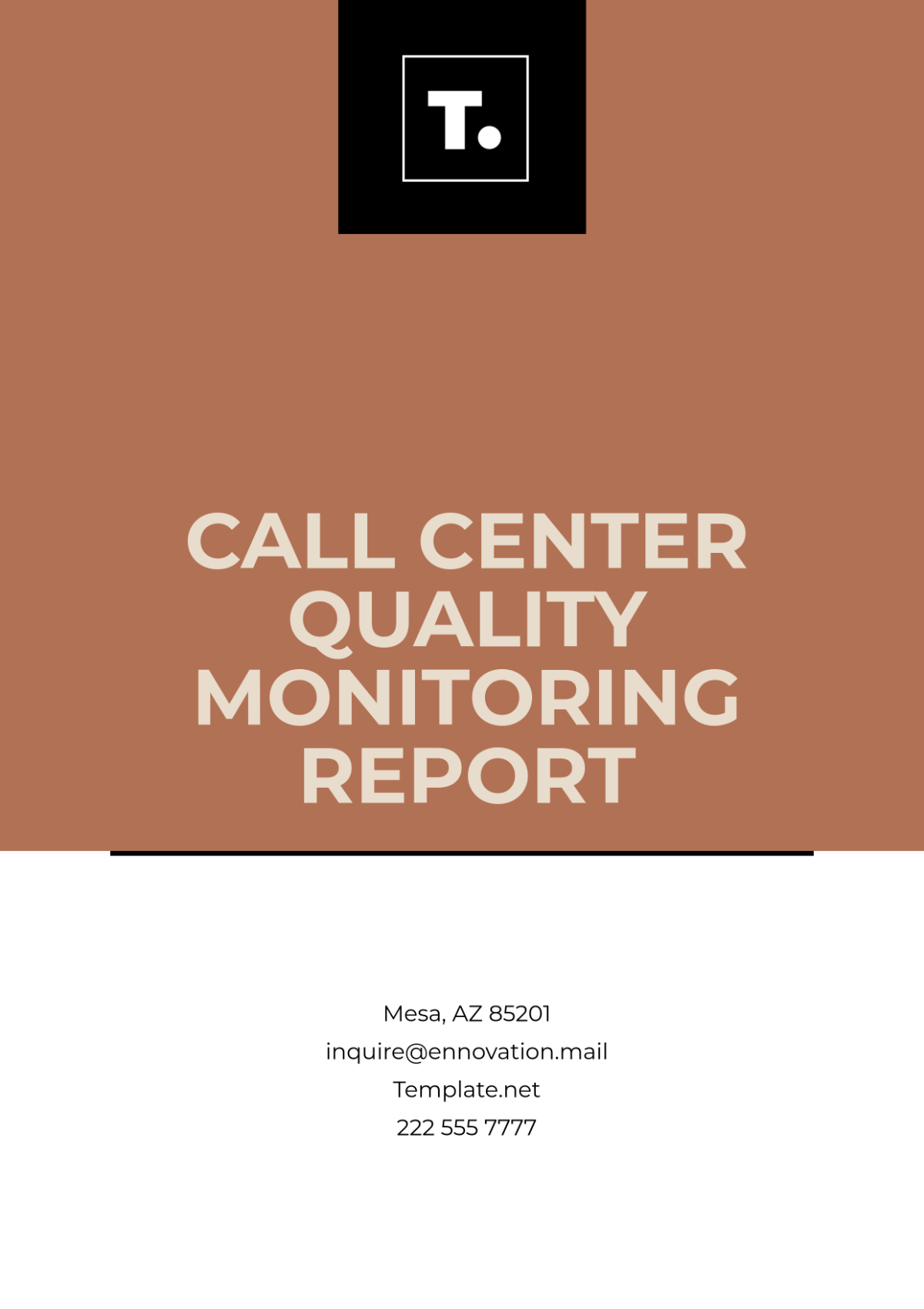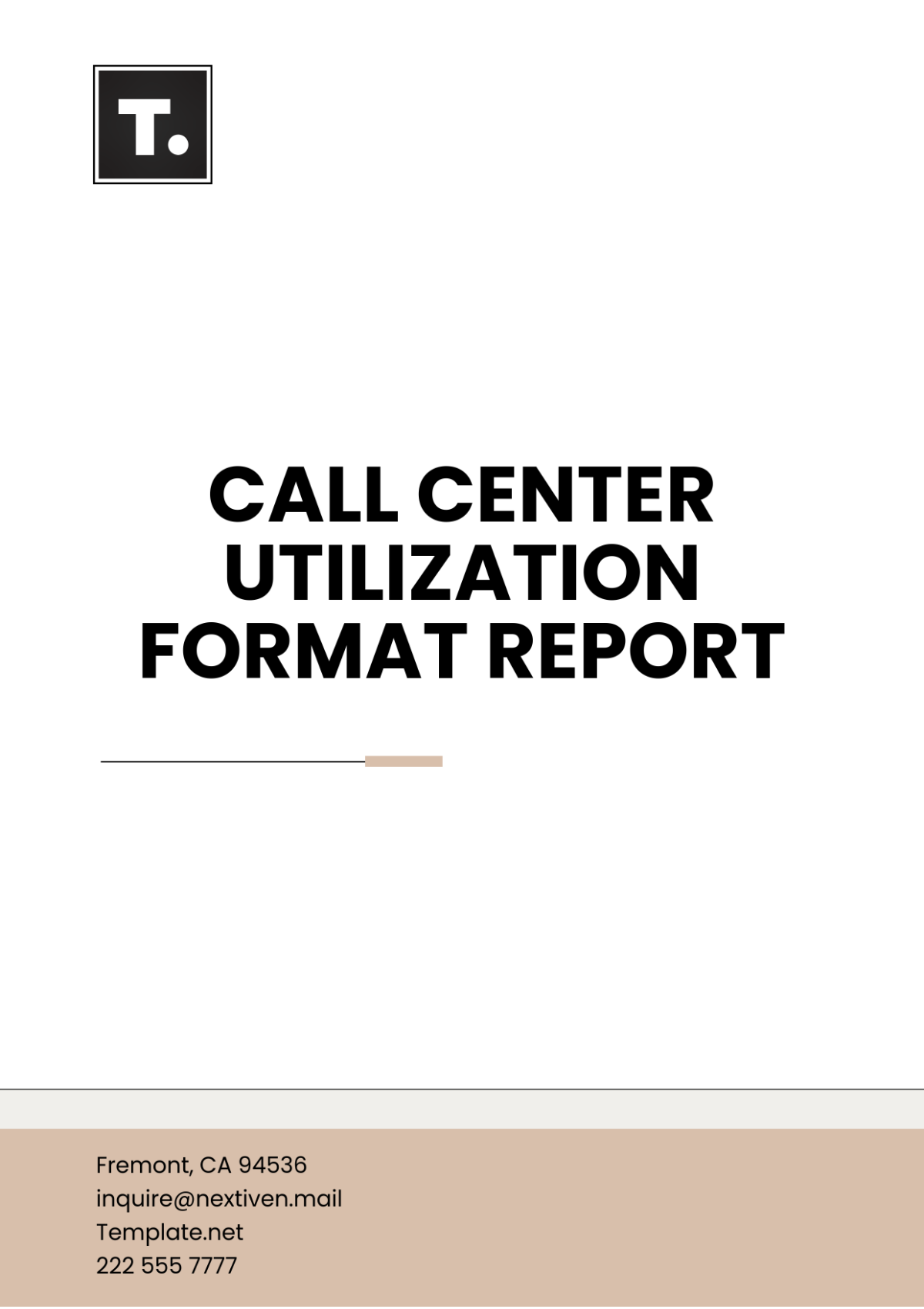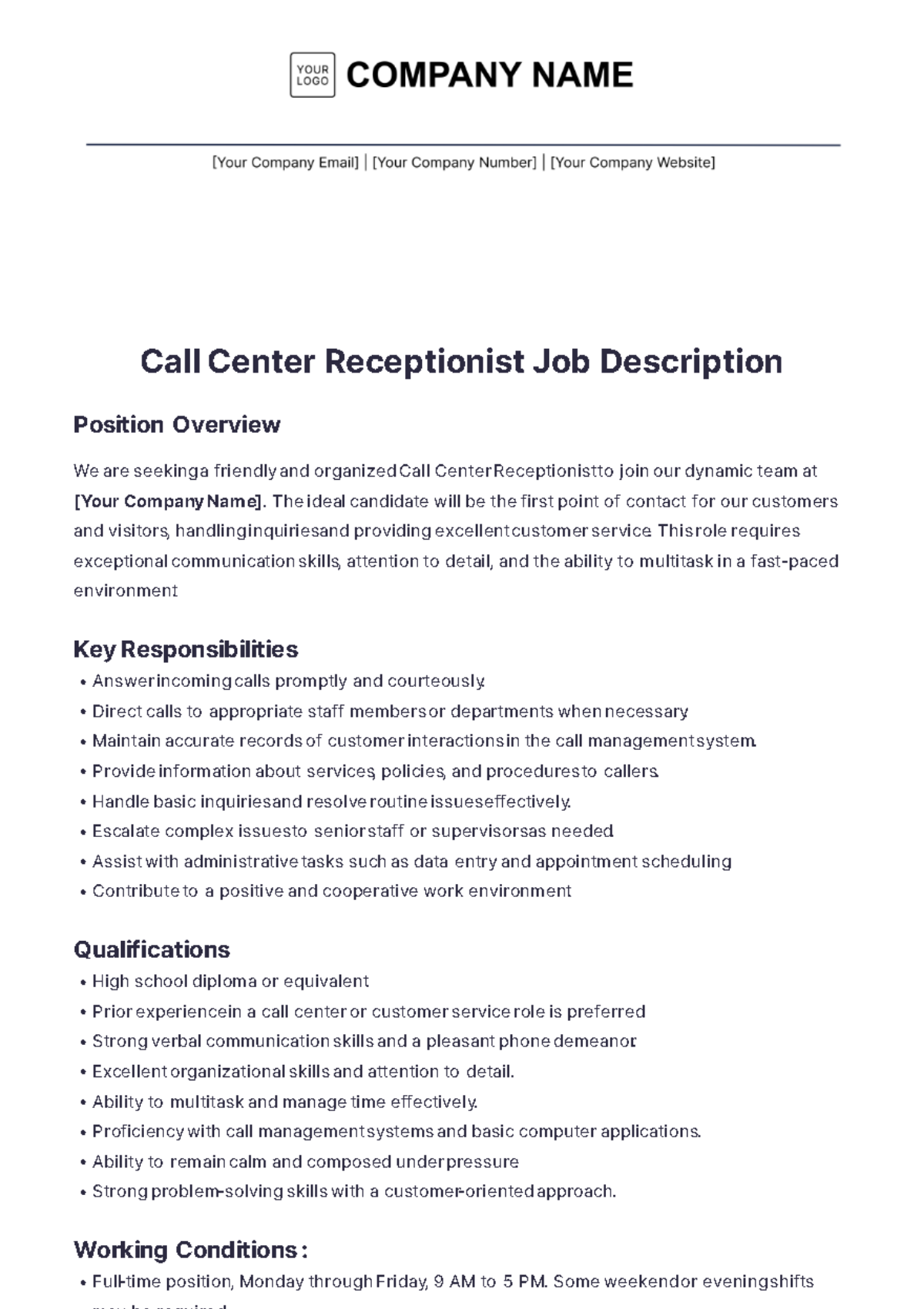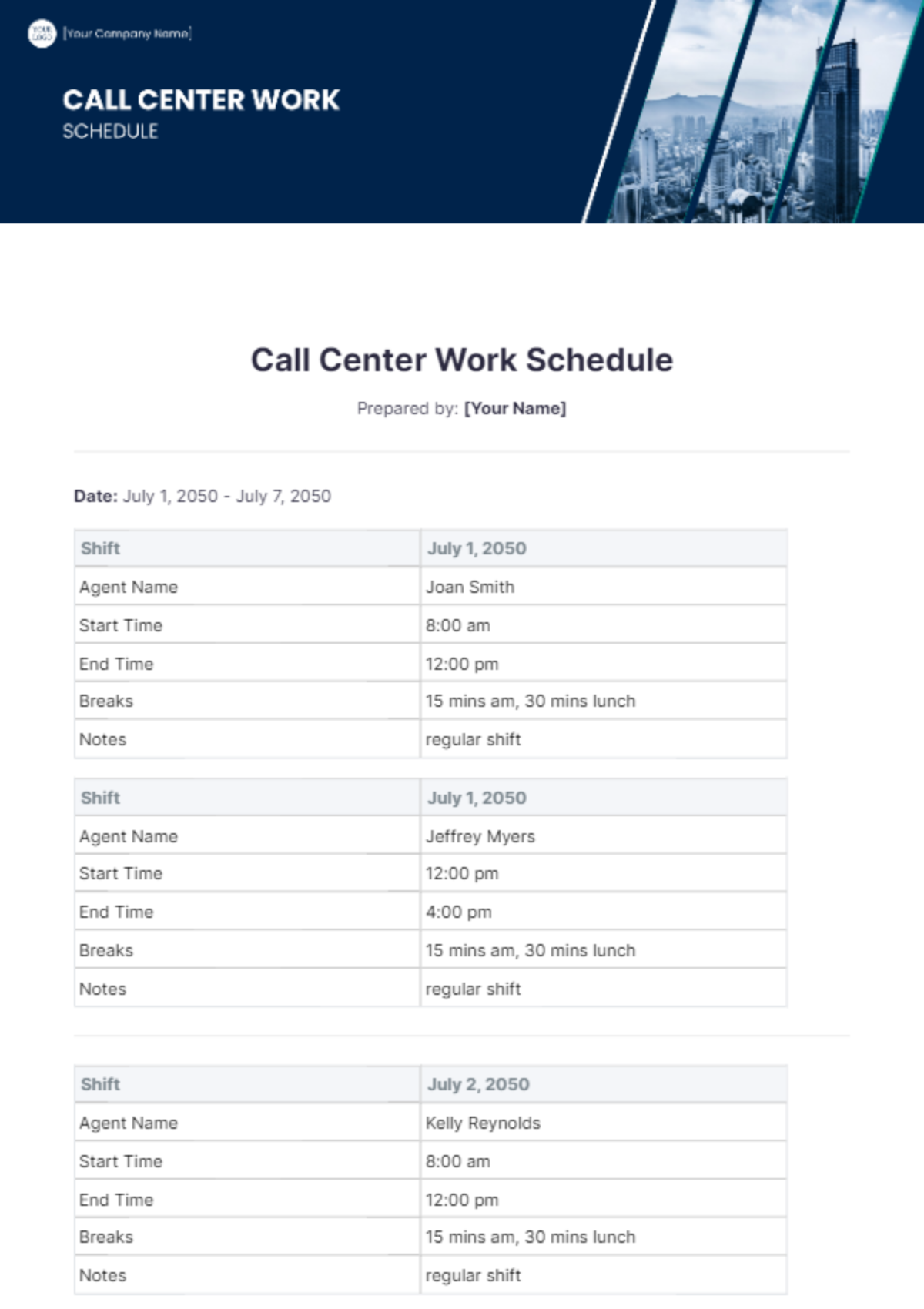Call Center Business Requirements Document
Prepared by: [YOUR NAME]
Email: [YOUR EMAIL]
This Call Center Business Requirements Document outlines the necessary requirements and expectations for the implementation, optimization, and enhancement of [YOUR COMPANY NAME] call center operations. It serves as a comprehensive guide for stakeholders involved in setting up, upgrading, or improving call center systems and processes, with the ultimate goal of enhancing customer service efficiency and satisfaction.
I. Business Objectives
The call center must serve as an efficient hub for handling customer inquiries and ensuring high levels of customer satisfaction. The business objectives for this call center project include:
Improve Customer Satisfaction: Achieve a 90% customer satisfaction (CSAT) score by enhancing response times, providing clear information, and resolving issues quickly.
Reduce Average Handling Time (AHT): Lower the AHT from 10 minutes to 7 minutes by optimizing workflows and introducing automation where applicable.
Increase First Call Resolution (FCR): Improve the FCR rate to 85% by providing agents with more effective tools and training.
II. Stakeholders and Roles
Key stakeholders for the call center project include the following:
Stakeholder | Role | Responsibilities | Contact Information |
|---|---|---|---|
[YOUR COMPANY NAME] | Project Sponsor | Provides overall guidance and funding for the project. | [YOUR COMPANY EMAIL] |
Call Center Management | End-User and Implementation Leader | Oversees the operational aspects of the call center and ensures it meets business goals. | malcolm@you.mail |
IT Development Team | Technical Lead | Designs and implements call center software, integrates systems, and ensures system functionality. | philip@you.mail |
External Vendor | Service Provider (if applicable) | Delivers the required call center technology solutions or services. | carmel@you.mail |
III. Functional Requirements
This section outlines the essential functions that the call center must fulfill to meet business goals:
Call Routing: The system must be able to automatically route calls based on pre-configured rules (e.g., IVR, agent availability).
CRM Integration: The call center system should integrate seamlessly with the existing CRM to provide agents with relevant customer information instantly.
Omnichannel Support: The system should support voice, email, chat, and social media channels to ensure multi-channel communication.
Call Monitoring and Reporting: The system must allow for real-time call monitoring, call logging, and reporting on key metrics such as AHT, FCR, and CSAT.
IV. Non-Functional Requirements
Non-functional requirements focus on the performance, scalability, and security of the call center systems. These include:
Scalability: The system should handle up to 1,000 concurrent calls and allow for future scaling as the company grows.
Security: The solution must comply with GDPR and HIPAA standards for data protection and security.
System Downtime: The system must ensure 99.9% uptime, with maintenance windows communicated at least 48 hours in advance.
Speed and Latency: Call connection times should not exceed 3 seconds, and all systems should have less than 2 seconds of latency.
V. Implementation Timeline
The following timeline outlines the key milestones and deadlines for the call center project:
Milestone | Completion Date | Responsible Party | Notes |
|---|---|---|---|
Requirements Gathering | January 15, 2050 | Business Analyst | Initial meetings with stakeholders. |
System Design & Vendor Selection | February 20, 2050 | IT Team / Vendor | Finalizing technical design and choosing vendor. |
System Installation | March 15, 2050 | IT Team / Vendor | Installing hardware and software components. |
Testing Phase | April 10, 2050 | QA Team / IT Team | Testing system functionality, security, and performance. |
Go-Live | May 1, 2050 | Call Center Management | Launching the new system. |
VI. Performance Metrics and KPIs
Key performance indicators (KPIs) will be tracked to assess the success of the call center operations:
Metric | Target | Measurement Frequency | Responsible Party |
|---|---|---|---|
Customer Satisfaction (CSAT) | 90% or higher | Monthly | Call Center Management |
First Call Resolution (FCR) | 85% or higher | Monthly | Call Center Management |
Average Handling Time (AHT) | 7 minutes or less | Daily | IT Team / Call Center Management |
Service Level | 80% of calls answered within 30 seconds | Daily | Call Center Management |
VII. Compliance and Regulatory Requirements
The call center system must adhere to the following regulations:
GDPR: Ensure customer data protection and compliance with European Union privacy laws.
HIPAA: For any healthcare-related services, ensure compliance with the Health Insurance Portability and Accountability Act for handling sensitive patient information.
PCI-DSS: If payment information is handled, the call center system must comply with Payment Card Industry Data Security Standards.
VIII. Conclusion
The successful implementation of this call center system will greatly enhance [YOUR COMPANY NAME]'s ability to provide excellent customer service and streamline operational efficiency. By aligning the functional and non-functional requirements with business objectives, and ensuring all stakeholders are engaged, we will achieve a significant improvement in customer satisfaction, reduced operational costs, and better overall performance. The project's successful completion is integral to maintaining [YOUR COMPANY NAME]’s competitive advantage and delivering outstanding service to our customers.
























